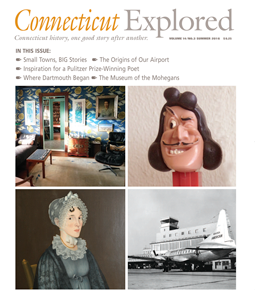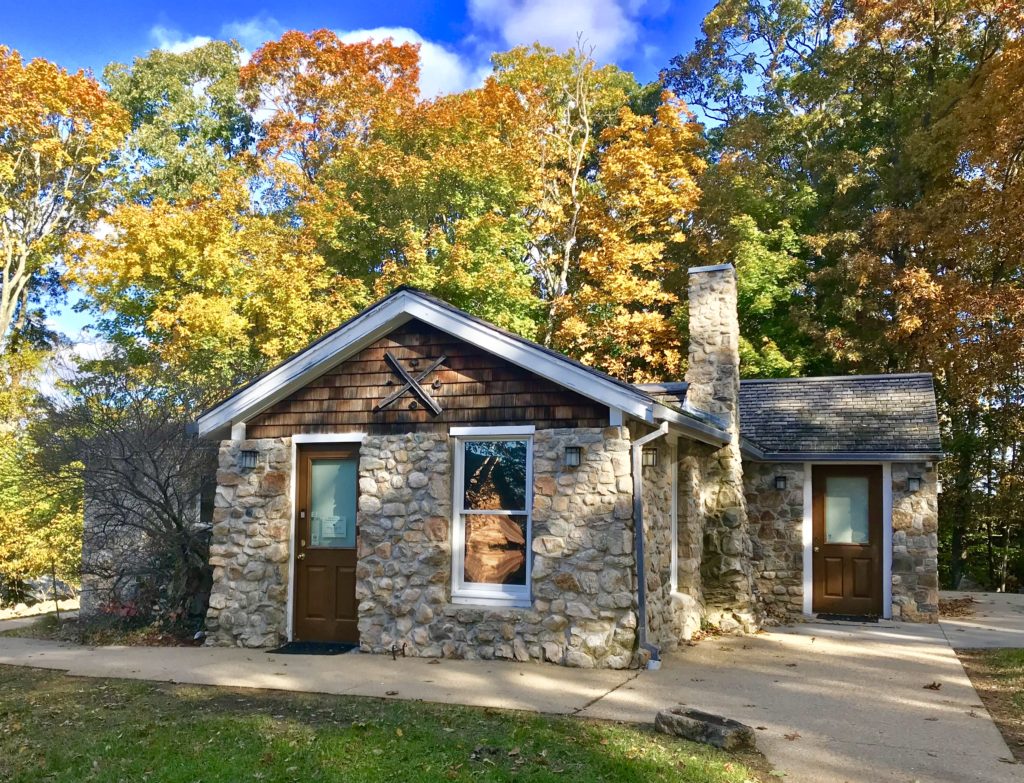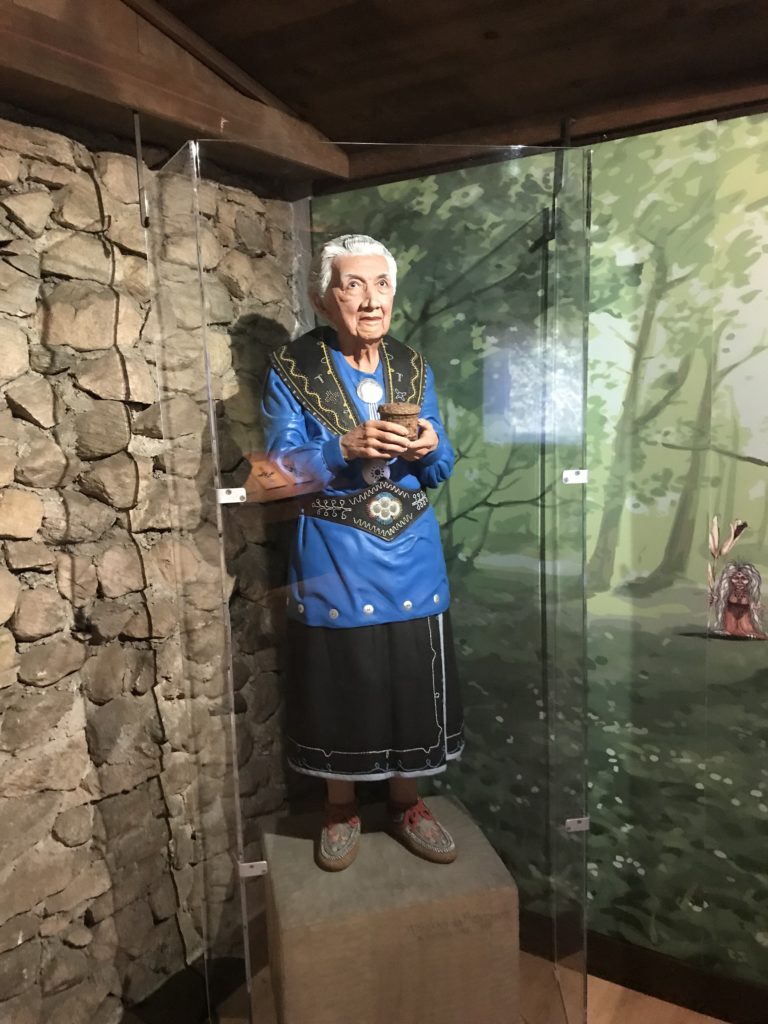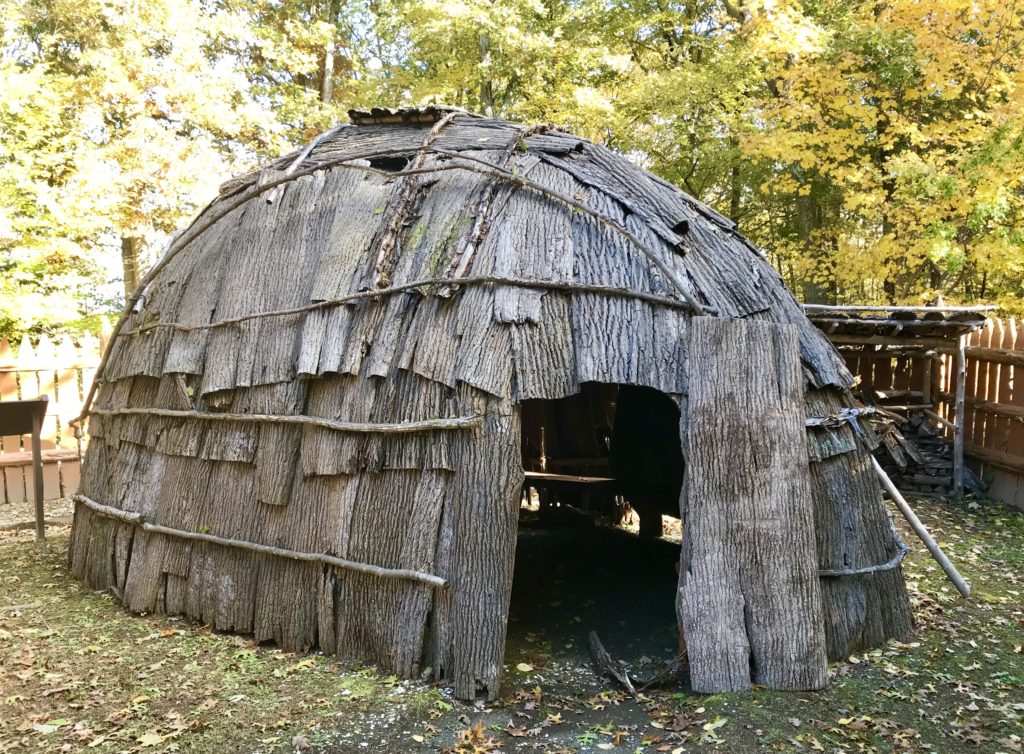(c) Connecticut Explored Inc. Summer 2016
Subscribe to receive every issue!
The Tantaquidgeon Museum shares with its visitors eastern woodlands Indian history and traditions from a Native American perspective. Its guiding principal is the belief of its founders, siblings Gladys and Harold Tantaquidgeon that “it’s hard to hate someone who you know a lot about.” Harold Tantaquidgeon (1904 – 1989) was chief of the Mohegan Tribe from 1950 to 1970. Gladys (1899 – 1905) was tribal medicine woman and lived to be 106 years old. Harold and Gladys were descendants of the Mohegan sachem Uncas (c. 1588—c. 1683). Uncas became the first Mohegan sachem when he and his followers left the Pequot tribal village in about 1635 and settled on the western bank of the Thames River. At that time, they adopted the old, lesser-used clan name Mohegan.
The Tantaquidgeon Museum is the among the oldest (by some accounts, the oldest) Native American-owned and -operated museums in the United States. The original stone building made of native granite was built in 1931 at the height of the Great Depression by Harold and his father, John Tantaquidgeon. Gladys is quoted in Melissa Jayne Fawcett’s Medicine Trail: The Life and Lessons of Gladys Tantaquidgeon (University of Arizona Press, 2000) as saying:
The purpose of this little stone room was to house our collection of various artifacts that had been made and used by our people and were scattered about our living quarters here and there so that not only our own people could enjoy them but others as well …. Father was disabled at the time [the museum was built], and he had to use a cane, and he was blind in one eye. But according to what my brother said, I guess he handled every one of the granite fieldstones used in the construction of that building . . . . When it was finally completed members of the community and other Mohegans brought in things to put on display …. From the beginning, Tantaquidgeon Museum was to be the place where we keep Mohegan treasures.
In the 1950s and 1960s, two rooms were added onto the original building; the latest major renovation was completed in 2008. Recently a replicated Mohegan village with a wigwam, longhouse, garden, and fire pit, surrounded by a palisade fence and walking trail were added to the site. The crushed-clamshell walking trail features herb gardens, a dugout canoe, and memory pile (a pile of small stones used to mark important places such as burials or landmarks). The village installation won a preservation award from the Connecticut Trust for Historic Preservation in 2013.
The museum is now operated by the Mohegan Tribe. On view is work by Mohegan craftspeople from the 1880s through the mid-1960s including splint baskets, carved utensils, bowls, pipes, bows, arrows, and clubs. The ceremonial regalia worn by Gladys Tantaquidgeon and Harold Tantaquidgeon are on display and include a belt made in the 1760s by Martha Uncas and given to Gladys by Fidelia Fielding, also a former medicine woman. Many objects made by Mohegan chiefs are on display, including the Wolf Club made by Chief Matahga (whose given name was Burrill Hyde Fielding) made c. 1990s, which is still used in ceremonies today, carved deep spoons by Chief Weegun (Henry Mathews) (date unknown), a ceremonial pipe made by Chief Little Hatched (Courtland Fowler) (date unknown), and a carved marble wolf and whale by Chief G’Tinemong (Ralph Sturges) (date unknown). One of the most important objects is the Wampum collar worn by Mohegan Chief Uncas, which depicts the split between the Mohegan and Pequot tribes and is dated to the mid-1600s.
 Traditional Mohegan medicine objects are on display, including turtle shell rattles and cups and false face-masks. Other traditional Mohegan crafts include corn-husk and corn-cob dolls, wish-bone dolls, puzzle pouches, and beaded items. Traditionally these objects would be made by tribal members and offered for sale at the annual Wigwam Festival. The museum’s Southwest Room, dedicated to tribes from the southwest and northwest United States, features Hopi pottery, Navajo rugs, and Lakota parfleche (meaning made of rawhide) boxes.
Traditional Mohegan medicine objects are on display, including turtle shell rattles and cups and false face-masks. Other traditional Mohegan crafts include corn-husk and corn-cob dolls, wish-bone dolls, puzzle pouches, and beaded items. Traditionally these objects would be made by tribal members and offered for sale at the annual Wigwam Festival. The museum’s Southwest Room, dedicated to tribes from the southwest and northwest United States, features Hopi pottery, Navajo rugs, and Lakota parfleche (meaning made of rawhide) boxes.
The Tantaquidgeon Museum receives visitors from all over the world and frequently hosts school groups. The Mohegan Tribe offers a grant program for schools in the state of Connecticut for transportation to the museum, lunches, and information regarding Native games, stories, dancing and crafts. Yale University, the University of Massachusetts, Connecticut College, Amherst, Wesleyan, and Trinity are among the colleges and universities that bring students to the museum. The museum welcomes visitors of all ages to learn about the important Mohegan culture and history.
Anita Fowler is director of operations for the Tantaquidgeon Museum.
Explore!
Tantaquidgeon Museum, 1819 Norwich New London Turnpike, Uncasville. 860-848-0594, museum@moheganmail.com. Open year-round, Tuesday – Saturday, 10 a.m. – 4:30 p.m. For more information visit Tantaquidgeon Museum on Facebook or Twitter.
Read more stories about Native Americans in Connecticut on our TOPICS page.



